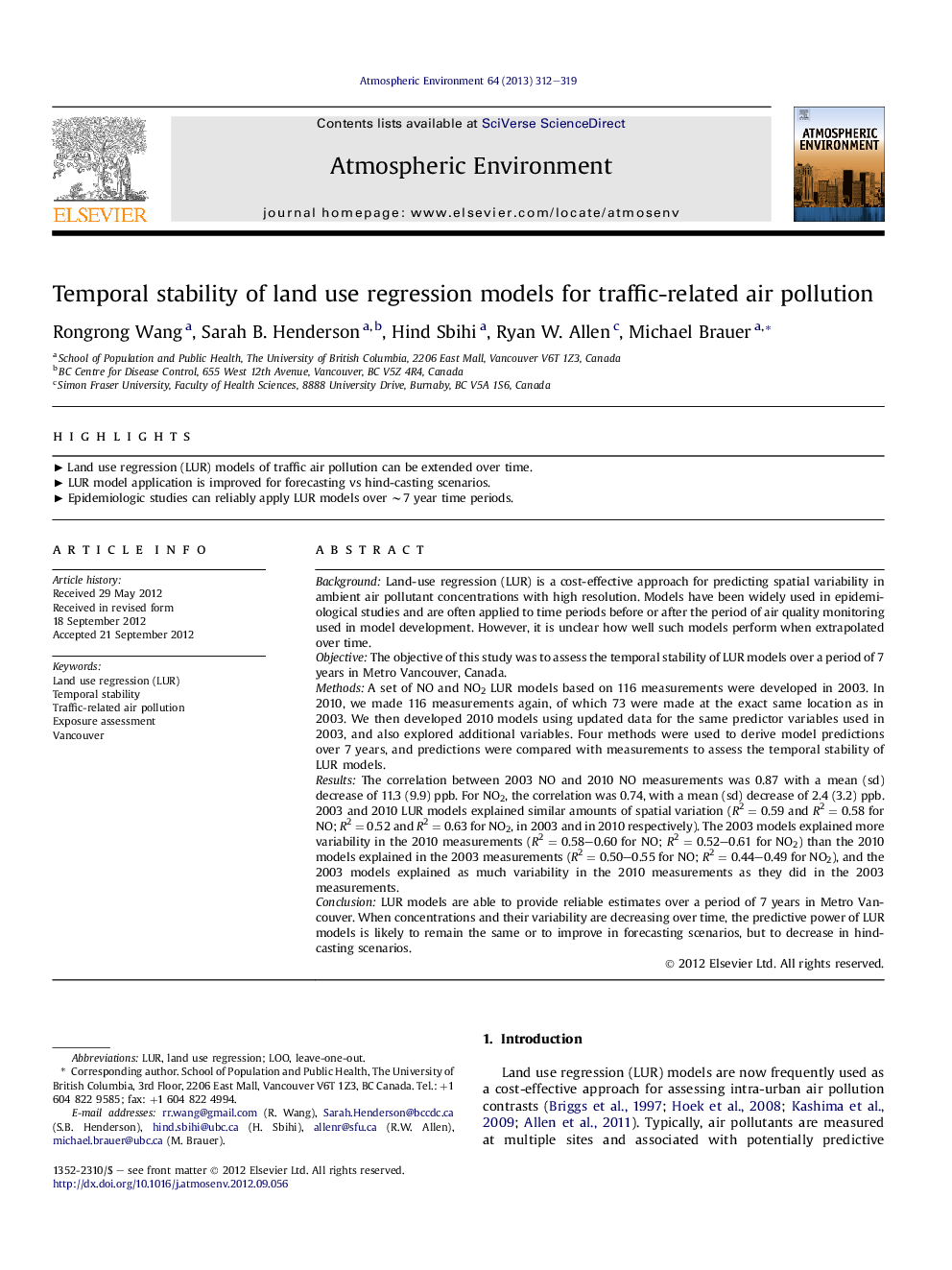| کد مقاله | کد نشریه | سال انتشار | مقاله انگلیسی | نسخه تمام متن |
|---|---|---|---|---|
| 4438578 | 1620407 | 2013 | 8 صفحه PDF | دانلود رایگان |

BackgroundLand-use regression (LUR) is a cost-effective approach for predicting spatial variability in ambient air pollutant concentrations with high resolution. Models have been widely used in epidemiological studies and are often applied to time periods before or after the period of air quality monitoring used in model development. However, it is unclear how well such models perform when extrapolated over time.ObjectiveThe objective of this study was to assess the temporal stability of LUR models over a period of 7 years in Metro Vancouver, Canada.MethodsA set of NO and NO2 LUR models based on 116 measurements were developed in 2003. In 2010, we made 116 measurements again, of which 73 were made at the exact same location as in 2003. We then developed 2010 models using updated data for the same predictor variables used in 2003, and also explored additional variables. Four methods were used to derive model predictions over 7 years, and predictions were compared with measurements to assess the temporal stability of LUR models.ResultsThe correlation between 2003 NO and 2010 NO measurements was 0.87 with a mean (sd) decrease of 11.3 (9.9) ppb. For NO2, the correlation was 0.74, with a mean (sd) decrease of 2.4 (3.2) ppb. 2003 and 2010 LUR models explained similar amounts of spatial variation (R2 = 0.59 and R2 = 0.58 for NO; R2 = 0.52 and R2 = 0.63 for NO2, in 2003 and in 2010 respectively). The 2003 models explained more variability in the 2010 measurements (R2 = 0.58–0.60 for NO; R2 = 0.52–0.61 for NO2) than the 2010 models explained in the 2003 measurements (R2 = 0.50–0.55 for NO; R2 = 0.44–0.49 for NO2), and the 2003 models explained as much variability in the 2010 measurements as they did in the 2003 measurements.ConclusionLUR models are able to provide reliable estimates over a period of 7 years in Metro Vancouver. When concentrations and their variability are decreasing over time, the predictive power of LUR models is likely to remain the same or to improve in forecasting scenarios, but to decrease in hind-casting scenarios.
► Land use regression (LUR) models of traffic air pollution can be extended over time.
► LUR model application is improved for forecasting vs hind-casting scenarios.
► Epidemiologic studies can reliably apply LUR models over ∼7 year time periods.
Journal: Atmospheric Environment - Volume 64, January 2013, Pages 312–319